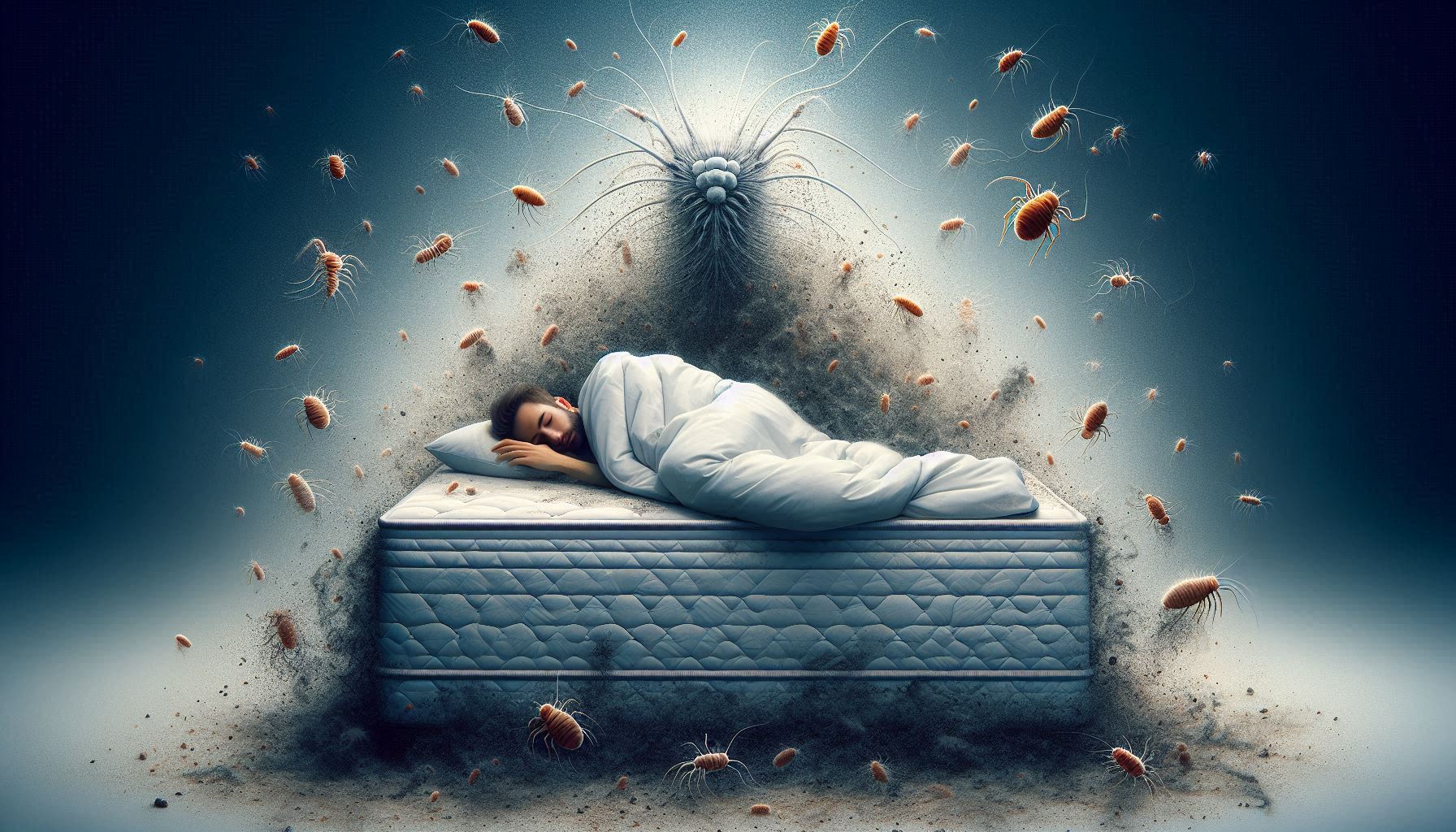Dust mites are microscopic creatures that thrive in warm, humid environments and feed on dead skin cells. Unfortunately, mattresses offer the perfect habitat for these tiny pests, which can lead to health issues, particularly for those with allergies or asthma.
In this article, we’ll explore why dust mites are commonly found in mattresses, the health risks associated with them, and effective ways to control and prevent dust mite infestations in your bed.
Why Are Dust Mites Common in Mattresses?
Dust mites thrive in environments where they can find warmth, humidity, and a steady food source. Mattresses, pillows, and bedding are ideal, as they provide warmth from body heat, moisture from sweat, and skin cells that are constantly shed while we sleep. This combination creates a breeding ground for dust mites, allowing them to multiply quickly and potentially turn your mattress into a hotspot for allergens.
Health Risks Associated with Dust Mites
1. Allergic Reactions
Dust mites produce proteins that, when inhaled, can trigger allergic reactions in sensitive individuals. Common symptoms include sneezing, runny nose, itchy eyes, and skin rashes. These symptoms are often worse in the morning, as people are exposed to the allergens while sleeping.
2. Asthma Aggravation
For people with asthma, dust mites can worsen symptoms, such as wheezing, shortness of breath, and coughing. Dust mite allergens can inflame the respiratory tract, making asthma attacks more likely and severe. Children with asthma are especially vulnerable, and dust mites in mattresses can exacerbate their condition.
3. Skin Irritations
Some people experience skin irritation from exposure to dust mites. While the mites themselves don’t bite, their excretions and dead bodies can cause contact dermatitis, leading to itchy or inflamed skin.
How to Control and Prevent Dust Mites in Mattresses
Reducing dust mites in your mattress requires a combination of cleaning, preventive measures, and changes to your bedding routine. Here are effective strategies to keep these pests at bay:
1. Use Allergen-Proof Mattress and Pillow Covers
Encase your mattress and pillows in allergen-proof covers made from tightly woven fabric. These covers create a barrier that prevents dust mites from entering or exiting the mattress, effectively reducing their numbers over time. Wash the covers regularly for best results.
2. Wash Bedding Frequently
Wash your sheets, pillowcases, and blankets in hot water (at least 130°F or 55°C) once a week to kill dust mites and remove allergens. For items that can’t be washed in hot water, consider using a dryer on a high heat setting or freezing items that can’t be exposed to heat.
3. Reduce Humidity in the Bedroom
Dust mites thrive in humid environments, so keeping your bedroom’s humidity below 50% can make it less hospitable for them. Using a dehumidifier or air conditioner can help control humidity levels, making it harder for mites to survive and reproduce.
4. Vacuum the Mattress Regularly
Vacuuming the mattress surface with a vacuum equipped with a HEPA filter can help remove dust, skin cells, and some dust mites. However, vacuuming alone may not be enough to eliminate mites entirely, so it’s best used in combination with other methods.
5. Expose Your Mattress to Sunlight
Dust mites are sensitive to sunlight and heat, so airing out your mattress under direct sunlight can help reduce their population. If possible, take the mattress outdoors for a few hours to expose it to sunlight, which can naturally kill dust mites and reduce moisture.
6. Consider Steam Cleaning
Steam cleaning is an effective way to eliminate dust mites, as the high temperature can kill both mites and their eggs. Professional steam cleaning services or steam-cleaning devices for home use can be used to treat your mattress periodically.
7. Choose Dust Mite-Resistant Bedding
Opt for synthetic materials or hypoallergenic pillows and duvets, as these materials are less likely to harbor dust mites compared to traditional down or feather bedding. Hypoallergenic bedding can also be washed more frequently without losing its quality, helping keep dust mites in check.
Conclusion
Dust mites in mattresses can pose health risks, especially for people with allergies, asthma, or sensitive skin. By understanding why these microscopic pests thrive in mattresses and implementing effective cleaning and prevention strategies, you can minimize their impact on your health and improve the quality of your sleep. A combination of allergen-proof bedding, frequent washing, humidity control, and sunlight exposure can make a significant difference, keeping your mattress clean, fresh, and free from allergens. With consistent effort, you can enjoy a healthier, more restful night’s sleep free from dust mite disturbances.


